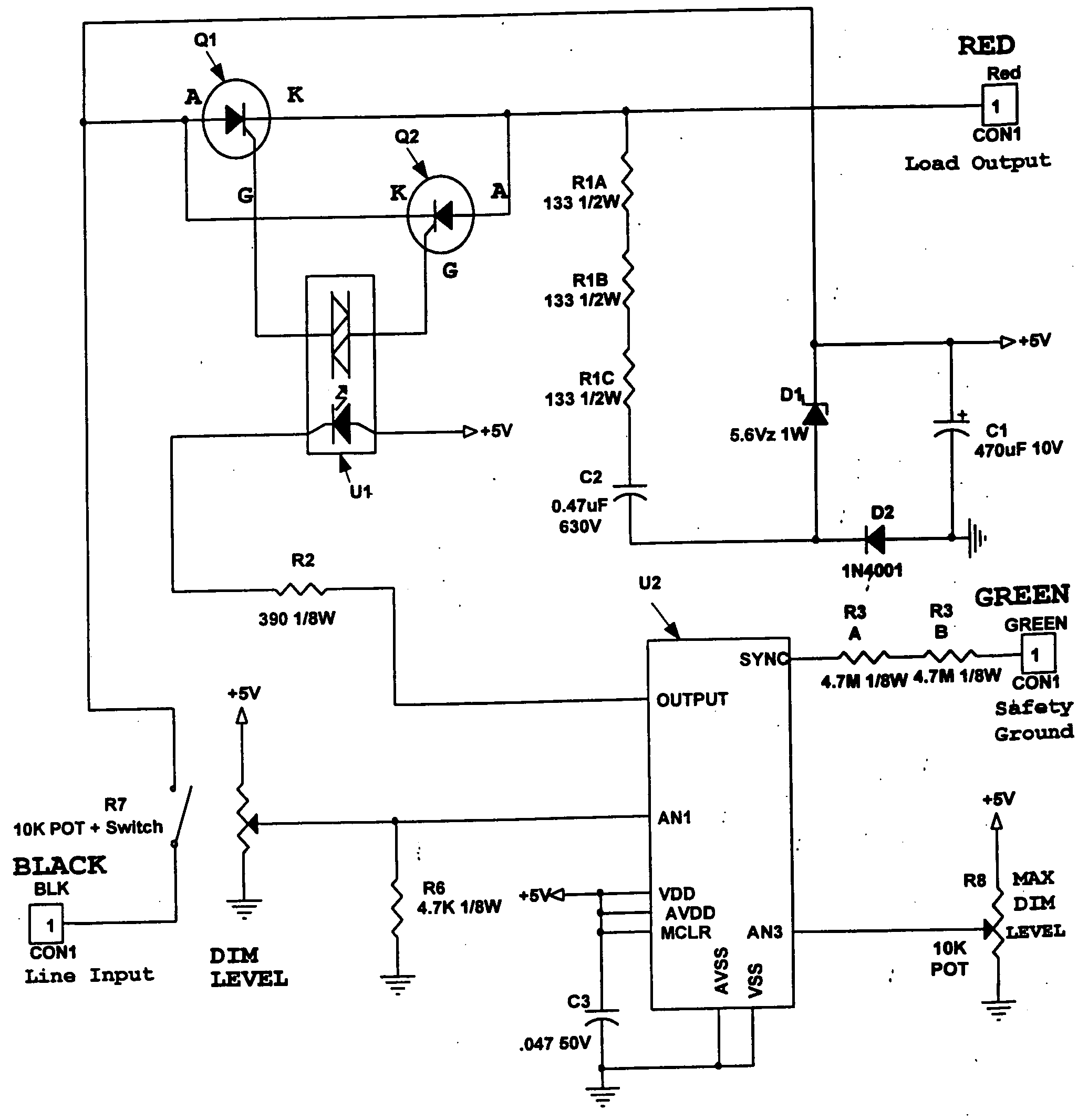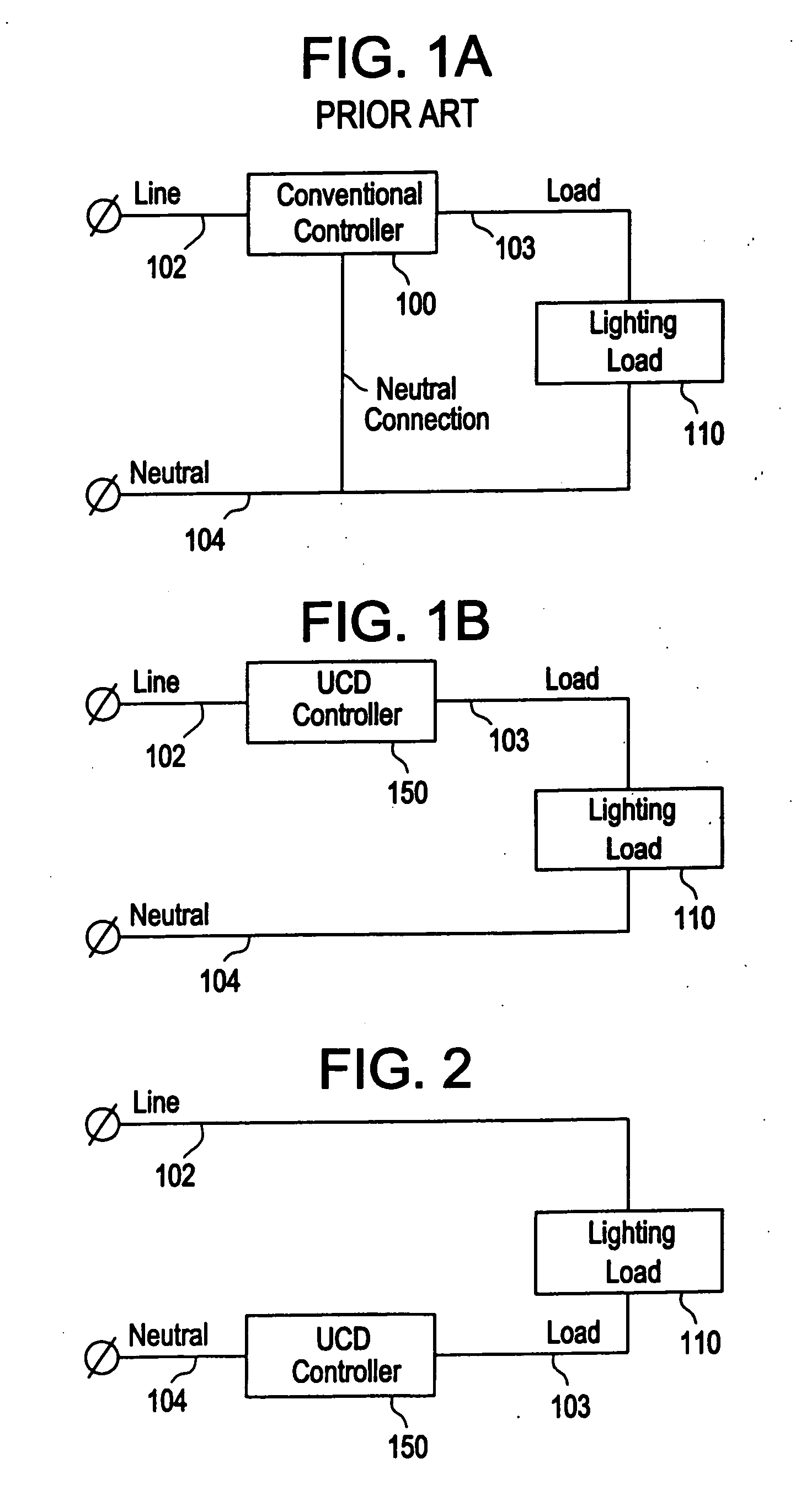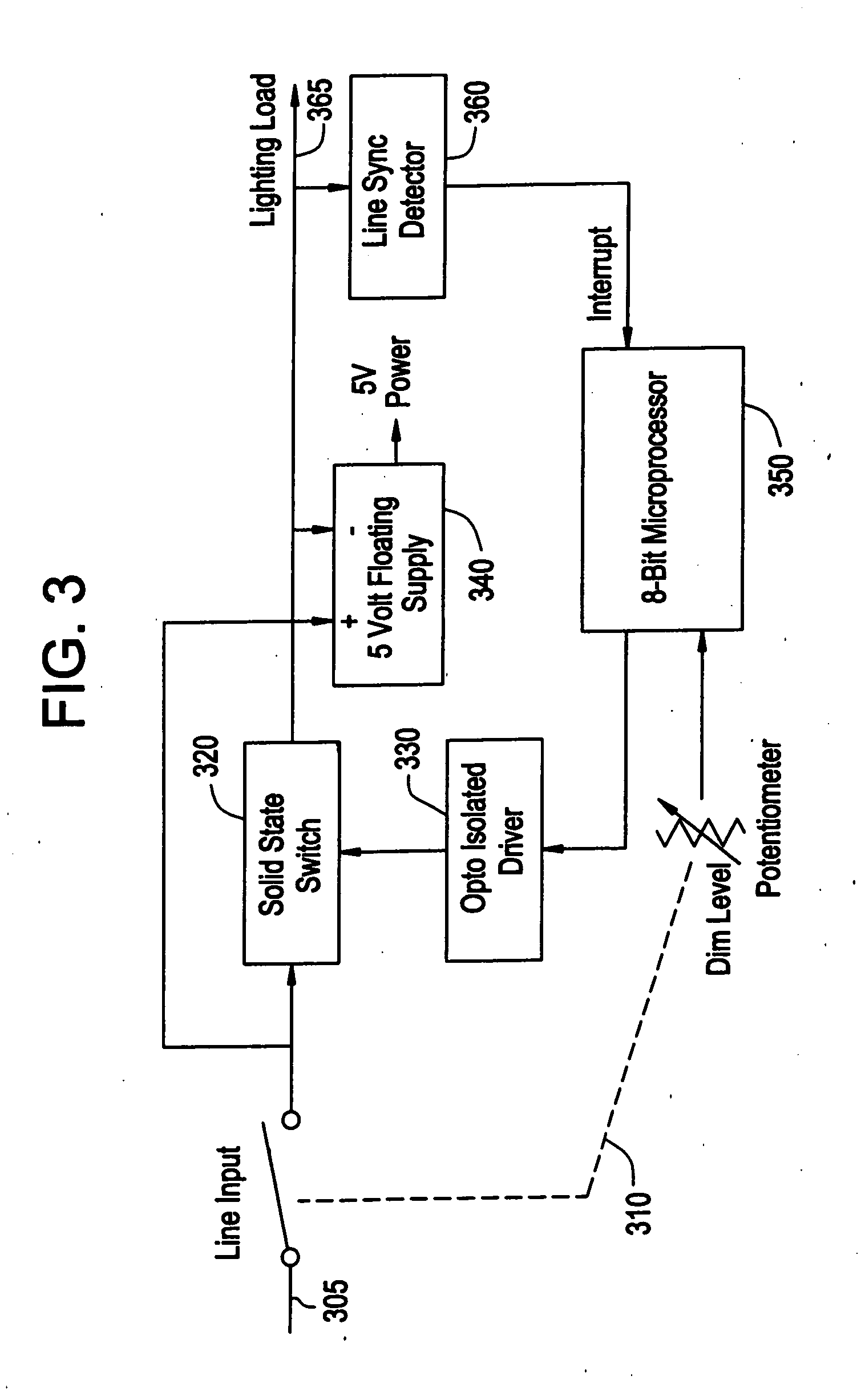Energy savings device and method for a resistive and/or an inductive load and/or a capacitive load
a technology of inductive load and energy saving device, which is applied in the direction of instruments, light sources, electrical equipment, etc., can solve the problems of affecting the efficiency of power-to-light output, and increasing air conditioning costs, so as to achieve energy saving
- Summary
- Abstract
- Description
- Claims
- Application Information
AI Technical Summary
Benefits of technology
Problems solved by technology
Method used
Image
Examples
first embodiment
[0039] The UCD includes a “push” On / Off switch and potentiometer unit 310 that is coupled to a line input (AC input voltage) 305, a solid state switch unit 320, a driver 330 for driving the solid state switch unit 320, a power supply 340, a microprocessor 350, and a line synchronization detector 360. The solid state switch unit 320 is provided between the line input 305 and the load 365. The switch and potentiometer unit 310 includes a “push” On / Off switch SW 1 and a potentiometer POT. The line synchronization detector 360 provides an interrupt signal to the microprocessor 350, which corresponds to “rising” zero crossing of a load current waveform, to be explained in more detail below.
[0040] The UCD is a two wire dimmer unit, and can be utilized to control standard magnetic fluorescent fixtures. The UCD may also be used to control other resistive, inductive or capacitive (e.g., standard electronic fluorescent fixtures) loads. The UCD functions similar to incandescent dimmers, but i...
second embodiment
[0159] As shown in FIG. 7, an ambient light sensor unit 710 of the second embodiment provides the capability to adjust the dimming level for constant level illumination during day / night ambient illumination variances. Referring also to FIG. 8, the ambient light sensor unit 710 includes a photo-resistor R19 with amplifier 720, which provides a stable indication of the total ambient illumination via a signal AMBLITE provided to port 1 of the microprocessor U2. The microprocessor U2 adjusts the dimming level to maintain this total ambient illumination level. For example, during a cloudy day, if the clouds break during the afternoon and thus the light through windows of an office increases, this results in an increase in the illumination level picked up by the ambient light sensor unit 710. Accordingly, the microprocessor U2 will adjust the load current waveform to provide a slightly dimmer signal than what was previously provided (during the cloudy period), so as to maintain a stable a...
seventh embodiment
[0167] The seventh embodiment includes a conduction angle phase switching circuit connected in parallel with a reactive load, an AC power source for switching power across the load, and a line switching circuit for enabling the application of AC power to the load through the phase switching circuit.
[0168] In the seventh embodiment, an ambient light sensor 910 is provided for generating a light control signal indicative of the amount of ambient light present in a particular location. Coupled to the light sensing circuit is a phase angle conduction control circuit, which generates and applies to a control terminal of the phase switching circuit a phase control signal to control the phase angle conduction time of the phase switching circuit, based on the amount of ambient light measured by the light sensing circuit, in order to maintain a substantially constant lighting level. In FIG. 9, the microprocessor U3 functions as the phase angle conduction control circuit.
[0169] Integrated wi...
PUM
 Login to View More
Login to View More Abstract
Description
Claims
Application Information
 Login to View More
Login to View More - R&D
- Intellectual Property
- Life Sciences
- Materials
- Tech Scout
- Unparalleled Data Quality
- Higher Quality Content
- 60% Fewer Hallucinations
Browse by: Latest US Patents, China's latest patents, Technical Efficacy Thesaurus, Application Domain, Technology Topic, Popular Technical Reports.
© 2025 PatSnap. All rights reserved.Legal|Privacy policy|Modern Slavery Act Transparency Statement|Sitemap|About US| Contact US: help@patsnap.com



